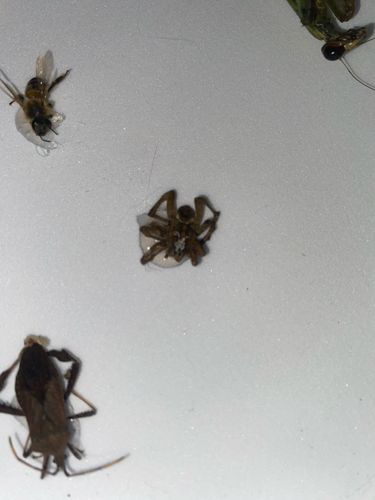Antlion
Scientific Name: Myrmeleontidae (Larva)
Order & Family: Neuroptera, Myrmeleontidae
Size: Larvae typically 0.5 to 1.5 cm (0.2 to 0.6 inches) in length; adults can have wingspans up to 10 cm (4 inches)

Natural Habitat
Sandy or dusty areas, often under overhangs or in sheltered locations
Diet & Feeding
The larvae (often called 'doodlebugs') are predatory, primarily feeding on ants and other small crawling insects that fall into their pit traps. Adults of some species are predatory, while others may feed on pollen or nectar.
Behavior Patterns
The most distinctive behavior of antlion larvae is the construction of conical pitfalls in loose soil to trap prey. They lie at the bottom, partially buried, waiting for insects to fall in. When prey attempts to escape, the antlion actively flicks sand to cause it to slide further down. Adults are typically nocturnal and weaker fliers.
Risks & Benefits
Antlion larvae are beneficial to ecosystems as natural pest control, particularly for ants. They pose no risk to humans; they do not bite or sting and are not venomous.
Identified on: 9/17/2025